“Sharing platforms” – car industry jargon for making (and selling) two iterations of basically the same thing – is generally considered an unflattering thing.
Or at least, a duplicative thing.
Why sell basically the same thing twice?
Well, because sometimes it works. GM, for instance, sells the Chevy Tahoe and the GMC Yukon and they’re both basically the same thing – with minor styling (and not so minor pricing) differences.
There’s a lot more difference between the Kia Sorento and the Hyundai Sante Fe – though both of them share a common platform, too.
What It Is
The Sorento is a compact-sized crossover that’s a little bit larger than most of the rest – which is how it manages to come standard with a third row.
It is closely related to the Hyundai Sante Fe but less expensive – $31,990 to start for the base LX trim vs. $34,200 for the base Sante Fe SE.
It costs less to start because it does not come standard with the more powerful engine (and larger 18 inch wheels) that are standard in the Sante Fe, although both of these are available as options in the Sorento.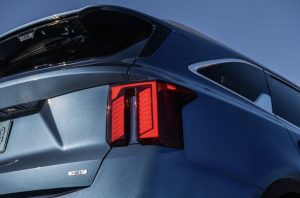
The Kia is also available with a plug-in hybrid drivetrain that isn’t available with the Sante Fe.
That means it can be plugged in to charge up its battery pack, like an electric car – but you don’t have to plug it in, like an electric car. Once its batteries are fully charged, it can be driven about 32 miles on just battery power, like an electric car. But – unlike an electric car – when you run low on charge, you do not have to stop for a charge, You can keep on driving for hundreds of miles, so long as there’s still gas in the tank.
The plug-in Sorento – focus of this review – is available in two trims, starting with the $47,900 EX and topping out with the $53,090 SX Prestige. Both come standard with AWD, in addition to the plug-in hybrid drivetrain.
The less-expensive EX trim is new – and both trims get exterior styling tweaks for the new model year, along with a new (and standard) 12.3 inch touchscreen for the EX and fancier configurable screen for the SX Prestige with voice-command functionality.
What’s Good
An EV that doesn’t have to be.
12 MPG better “city” mileage than gas-only Sorento.
Standard third row is hard to find in a crossover this size.
What’s Not So Good
What you save on gas is not likely to earn back what you spent to get the plug-in drivetrain.
Much lower max towing capacity – just 1,600 lbs. – than the non-hybrid Sorento, which can pull 3,500 lbs.
Voice-command system (in the SX Prestige) is easy to use but what happens when it glitches?
There’s a really small engine under the Sorento plug-in hybrid’s hood. Just 1.6 liters – which is not a lot of engine to move this 4,652 lb. crossover. But when combined with an electric motor, the combined output is 261 horsepower – which is a lot of power out of not-much engine.
It’s output comparable to that produced by a much larger (and six cylinder) engine, such as the 3.8 liter V6 that’s still standard in the Sorento’s bigger brother, the Telluride. It makes 291 horsepower, only 30 more out of more than twice as much engine.
But the V6 Telluride – which only weighs 4,248 lbs. – only manages 20 MPG in city driving and 26 on the highway vs. 35 city and 33 highway for the several hundred pounds heavier plug-in Sorento, which can also be driven about 32 miles without burning any gasoline at all – if you start your drive with a fully charged battery.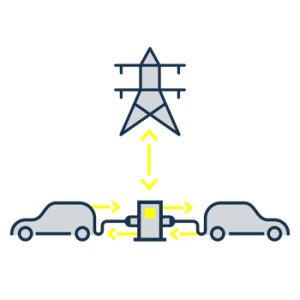
Which you can charge without burning any gas.
Just plug it in and – after about three hours (using a 240V electric dryer-type household outlet) it’ll be fully charged. If your destination is within the 32 or so miles of electric-drive range, the plug-in Sorento operates as en electric vehicle – without the electric vehicle’s range anxiety or the serial long-waits in-between drives.
You can plug in. But you never have to plug in. If you don’t, the 1.6 liter gas engine will keep the vehicle moving and charging, as you drive.
Just like a regular hybrid that doesn’t plug in.
You won’t recover the full 32-or-so miles of electric-only driving range that way, but you will recover enough charge to allow the gas engine to be cycled off as often as conditions allow – such as when the vehicle is stopped in traffic or coasting/decelerating. This is how the Sorento plug-in delivers the gas mileage numbers of a much smaller vehicle that doesn’t have three rows of seats.
The plug-in layout is attractive to buyers for that reason – and even more attractive to manufacturers such as Kia, because it’s a way to keep the government regulatory apparat that keeps pushing “zero emissions” EVs via regs that only electrically propelled vehicles can comply with off the manufacturers’ backs. Because plug-ins count as “zero emissions” when they are operating in EV mode. The regulatory apparat is appeased.
But they also give buyers who are wanting vehicles that can just be driven – without all the waiting in between – what they want, too.
There are, of course, downsides to the plug-in hybrid layout.
The obvious one being the buy-in cost. The difference in price between the least expensive version of the plug-in hybrid Sorento (the $38,690 EX) and the least expensive version of the non-hybrid Sorento (the $31,990 LX) is $6,700 and that sum would buy enough gas at the current $3.30 or so per gallon price of unleaded regular to fill up the non-hybrid Sorento for years to come.
If, that is, your drive is regularly farther than the plug-in’s all-electric 32 mile range.
If it isn’t – if you can keep it charged up by plugging it in rather than driving it to charge it – you might come out ahead after a few years. But give some thought to it – and “do the math” – before you decide to “save money” by spending more on the vehicle rather than gas.
You’ll also sacrifice the ability to tow much of anything.
The plug-in’s rated max of just 1,600 lbs. means at most a small trailer of the type people sometimes use to ferry a riding mower or a pair of dirt bikes around. If you need to be able to haul more weight than that, you’ll probably be better-served by the non-hybrid Sorento – which is rated to pull nearly twice as much (3,500 lbs.).
One thing that is very much in the plus column is the Sorento’s six speed (non-CVT) automatic transmission. It is almost impossible to find a new crossover that does not come standard with a CVT.
Driving a plug-in hybrid is uneventful – and that’s the point. It’s neat to be able to drive an EV that doesn’t oblige you to sweat how much farther you can can drive before you’ve got to stop – and wait.
When you drive a purely electric vehicle, anxiety is a constant riding companion and it gets old. Especially if you’re not a planner and enjoy the spontaneity of going someplace just because you want to.
Anytime you’d like to.
Kia also did a clever thing as regards this plug-in hybrid in, by making it the most powerful version of the Sorento – allowing it tout performance, as almost every electric-only vehicle does. But without the catch that comes with using that performance.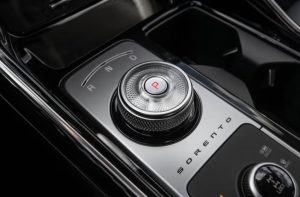
Which is that if you use an electric-only vehicle’s performance capabilities, you’ll rapidly deplete the battery pack’s charge and then you’ll have to stop for a wait.
But there is a catch that does come along for the ride with this plug-in hybrid vs. the non-hybridized version of the Sorento.
It is a smaller – 12.4 gallon capacity – gas tank. The non-hybrid carries almost 18 gallons of gas. The paradoxical result of which is that the non-hybrid Sorento has more highway driving range (548 miles) than the gas-sippier plug-in hybrid (409 miles). The plug-in does do well in stop-and-go “city” driving – 434 miles- but that is only a little bit better than the city-driving range of the non-hybrid (405 miles).
The reason why the smaller gas tank is because of the bigger battery (and the electric motor).
Room had to be made for these and that’s why the plug-in hybrid’s tank is smaller. This makes it seem thirstier than it is. If it could carry the same nearly 18 gallons of gas as the non-hybrid, the plug-in’s highway range would be closer to 600 miles and its city driving range closer to 500. Those numbers would likely be very persuasive to potential buyers and it’s a shame that Kia wasn’t able to find the space to make it so.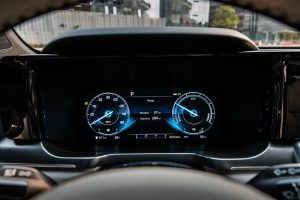
The plug-in also weighs several hundred pounds more (4,652 lbs.) than the non-hybrid (3,814 lbs.) and that extra weight can be felt – which is arguably good. If you prefer the more solid feel of a heavier vehicle. Before electric cars (and partially electric cars) came along, you generally had to buy a larger vehicle to get a heavier and so more solid-feeling vehicle. This Kia is just a little bit larger overall – in terms of its footprint – than compact-sized, two-row crossovers such as the Toyota RAV4 but it feels like a more substantial vehicle.
Because it literally is.
It is no easy thing to make a crossover look different than all the other crossovers -without negatively affecting the practical attributes (interior/cargo-carrying space) that people buy crossovers for having. If hey didn’t have them, they’d buy something that didn’t look like a crossover.
You see the dilemma.
Designers can go to town with the front end and grille – but the sides and rear pretty much need to be shaped the same way. And that is why crossovers pretty much all look the same.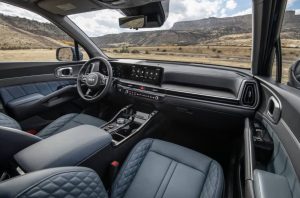
Given these parameters, Kia doesn’t make the mistake some make of making the front end look weird – not on purpose – so as to try to make up for the blandness of the rest of the shape. The Sorento is handsome in a nondescript way – and that is very much preferable to trying so hard to make the front end look like anything but another crossover, you end up with something that just looks weird.
The timeless example of this being Pontiac’s Aztek.
Rather than how it looks, what sets the Sorento apart is that it is a bit larger than other popular small crossovers that only seat five – which is why it can seat more. Because it’s just larger-enough to have room for a third row. There’s not a huge amount of room back there.
And that’s what sets this slightly larger small crossover apart from others that have about the same overall footprint, such as the Toyota RAV4 and the Honda CR-V. In fact there are only two other smallish crossovers that offer a third row. They are the VW Tiguan and the Mitsubishi Outlander. The Tiggy is less expensive – $28,880 to start – but does not offer a plug-in hybrid drivetrain. The Mitsu is the Kia’s most threatening rival because it does offer a plug-in variant – and for thousands less ($40,445 to start) than Kia charges for the plug-in version of the Sorento.
And the Sante Fe – the Sorento’s other-branded relation?
It has a third row, too – but it is not available with a plug-in hybrid drivetrain. On the other hand, it does come standard with a larger (2.5 liter) engine that makes more power (277 horsepower) and it looks more like an SUV than a crossover. 
So in a way, these two are kind of like the way a Chevy Camaro and a Pontiac Firebird were different, back in the day. They were related but had different looks – and different engines – which made each appealing to different buyers, for different reasons.
The Rest
One of the oddities of the currently available small crop of plug-in hybrids in this class is that they are only offered as top-of-the-line models, with top-of-the-line MSRPs. This seems to run contra the idea of saving money – ostensibly the main reason a buyer would be interested in a plug-in hybrid. Because if it’s expensive to buy the thing, then you’re not really “saving” anything (including the planet, by the way). 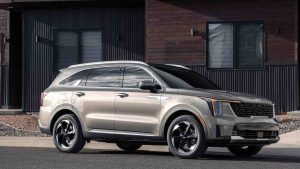
The Bottom Line
If you need a crossover with a third row but don’t want a big crossover, the Sorento’s one of just a few that’s got what you’re looking for.
. . .
If you like what you’ve found here please consider supporting EPautos.
We depend on you to keep the wheels turning!
Our donate button is here.
If you prefer not to use PayPal, our mailing address is:
EPautos
721 Hummingbird Lane SE
Copper Hill, VA 24079
PS: Get an EPautos magnet or sticker or coaster in return for a $20 or more one-time donation or a $10 or more monthly recurring donation. (Please be sure to tell us you want a magnet or sticker or coaster – and also, provide an address, so we know where to mail the thing!)
If you like items like the Baaaaaa! baseball cap pictured below, you can find that and more at the EPautos store!



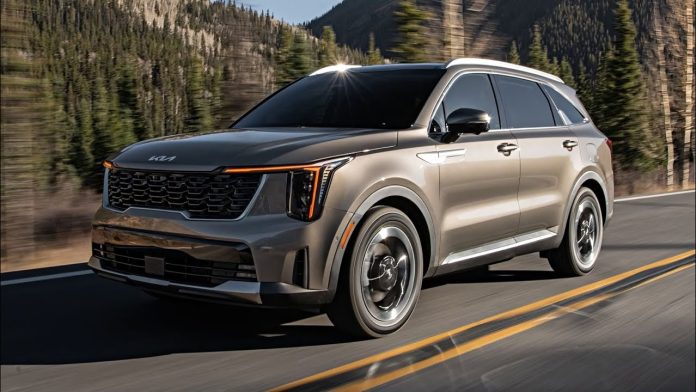


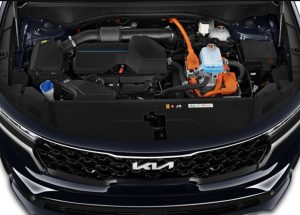







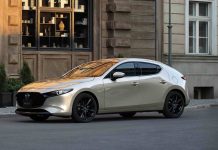


I just don’t see the “savings”, with the hybrid, is electric free or something?
crappy engines….look inside…
1.6L Hyundai / KIa GAMMA II GDI Engine Teardown
https://www.youtube.com/watch?v=U9GJmdAeKWs
Did I miss the power of the 1.6 without the hybrid?
How does this thing do when you use up the battery?
Hi Dan,
The hybrid system uses the engine to keep the battery from being discharged to the point that they vehicle would be solely reliant on the gas engine for propulsion. But – you’re right – when the battery can no longer be charged (either by the engine or by plugging it in) due to wearing out then you’re not going to be driving anywhere until the battery pack is replaced.
That would suck. A car with an engine that won’t go.
Kia/Hyundai have had major engine failure issues. Usually cylinder #3 rod bearings are suspect. A friend of mine bought a new Hyundai 3 years ago. It didn’t make it home from the Stealership to his house before the engine failed. Hyundai wanted to replace the engine on a car with less than 50 miles on it. I told him to get a new car, not a rebuild that would devaluate his car even more so. Hyundai finally replaced the car.
I don’t know what this 1.6L engine is like for reliability compared to their standard 4 cyl. History says it’s not so good.
Creepy Uncle Sam returns!
What ever happened to Keep It Simple Stupid? The whole hybrid thing seems too Rube Goldberg i.e. unnecessarily complex and expensive for no more than it does.
There is a lot of oil, face it, you see it, the reality, the entelechy.
Just live with it. The reason you see millions of cars and trucks and machines and stuff.
Thank you, Jesus.
1600 cc won’t haul much. What’s the use?
One million Teslas on the road, 20 million more gallons of gas available for the ICE cars on the road every 500 miles at 25 mpg.
Thank you, Elon.
Less than three dollars for a gallon of gas is money in the bank.
42 gallons of oil is priced less than 70 USD, a bargain if there ever was one at today’s ridiculous prices.
I have to cry in my beer, which is no problem there.
Electricity is not a bargain these days.
You have to read about something new and different.
‘4,652 lb. crossover’ — eric
… on a 111-inch wheelbase.
Kind of like a 20-pound neonate: disturbingly overweight.